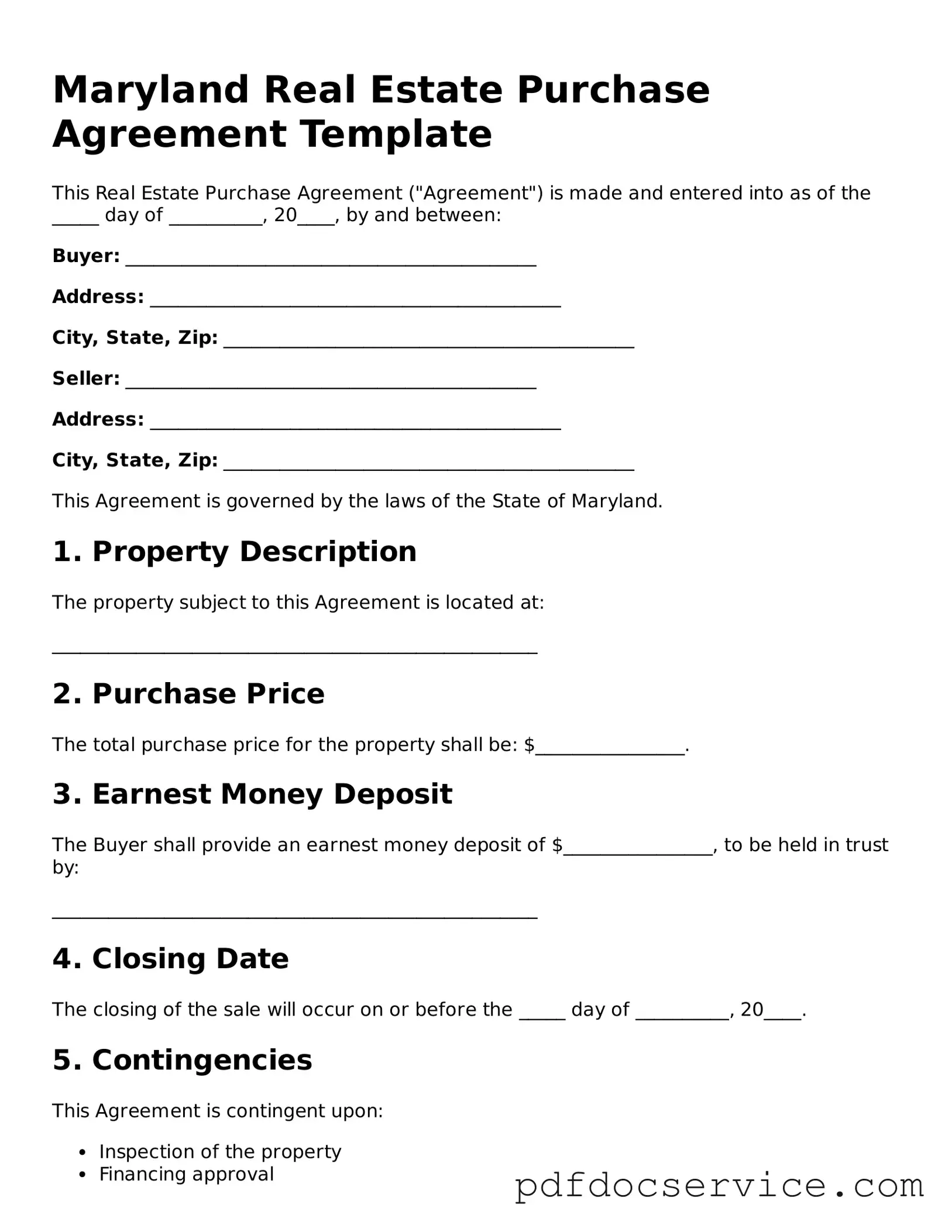Printable Real Estate Purchase Agreement Template for Maryland
The Maryland Real Estate Purchase Agreement is a legal document that outlines the terms and conditions of a property sale in Maryland. This form serves as a binding contract between the buyer and seller, detailing essential elements such as the purchase price, property description, and closing timeline. Understanding this agreement is crucial for anyone involved in a real estate transaction in the state.
Open Real Estate Purchase Agreement Editor
